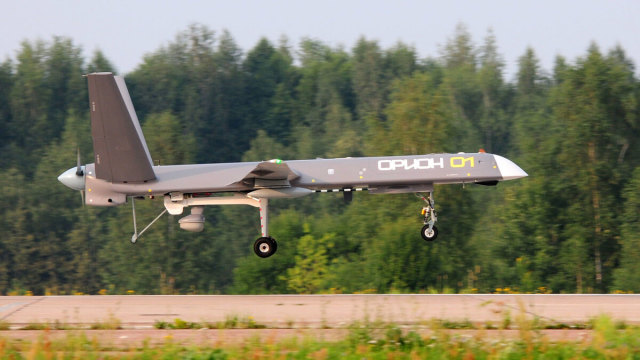The recent events in Nagorno-Karabakh have shown that it is difficult to win a modern war without attack drones. Russia is still lagging behind the West, China, Israel, and even Turkey, but is doing everything possible to narrow this gap.
Path to the unknown
Drones have a longer history than you might think. The first documented case of the use of "shock UAVs" dates back to 1849, when Austrian troops used unmanned balloons with a clockwork mechanism during the aerial bombardment of Venice. This attempt, due to weather conditions, was a failure, but on June 15 they flew to the city, dropping shrapnel charges on it. If we talk about material destruction, the effect was expected to be minimal, but the bombing sowed panic in the ranks of the enemy.
Yet such weapons were complex, unreliable, and quite expensive. Even during the First world war, UAVs were not widespread, although active experiments in this area were carried out in different countries. Some subsequent developments, such as the American planning bomb ASM-N-2 Bat of the second world war, can be conditionally attributed to drones, but they were not UAVs in the usual sense of the word.
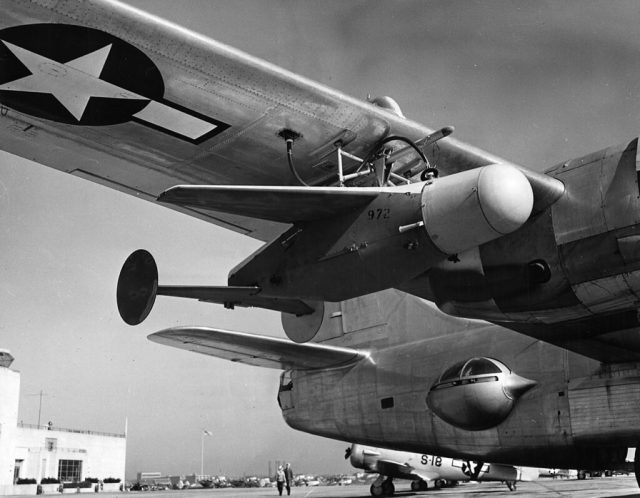
ASM-N-2 Bat
Image source: wikipedia
Their time came later, already in the years of confrontation between the Soviet Country and the United States. It is noteworthy that we have not always been outsiders in this area. Although Soviet combat aircraft almost always lost to the United States in terms of the sum of factors, the USSR was among the leaders in terms of disembodied aircraft. A striking example is the Tu-143 "Flight": an unmanned reconnaissance aircraft, which since 1973 was built in a series of 950 units. It was used during the war in Afghanistan, in the Lebanon war, and even (!) during the recent conflict in Eastern Ukraine. The country's leadership reactivated them in April 2014. Some reported that one such vehicle was shot down by supporters of the Donetsk people's Republic in August of the same year.
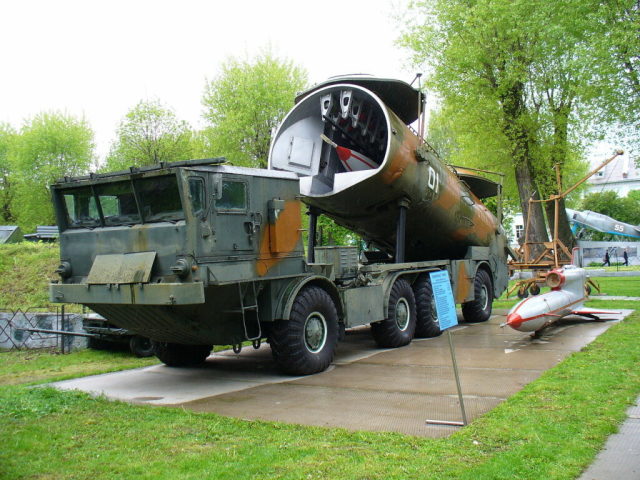
Tu-143 as part of the BP-3 complex
Image source: vpk-news
The development of the Tu-143 was the Russian Tu-243. It began mass production in 1994. Technical developments formed the basis for the improved tactical strike unmanned aerial vehicle Tu-300. The target load (for example, electronic equipment or bomb weapons) is placed in the internal compartment or on external holders. The total weight of the load is up to one ton (the device itself has a mass of four tons). Cruising speed-950 kilometers per hour.
Why has Russia not been able to build on its success and has not yet launched a single full-fledged reconnaissance and strike drone into large-scale production? The situation was affected by the financial problems of the 1990s and early 2000s, when there was no money, as it is now fashionable to say, "from the word at all". Technical difficulties played an equally important role. Nevertheless, Moscow has never abandoned work in this direction – and now they seem to have given the first serious fruits.
First of the Mohicans
Recently, a landmark event for Russia took place: the country received full-fledged attack drones for the first time in its history. We are talking about the Orion UAV. The word "full-fledged" means approximate compliance of the concept with American multi-purpose UAVs, such as the MQ-9 Reaper (translated into Russian – "Reaper") or MQ-1 Predator ("Predator"), capable of conducting reconnaissance, targeting, and effectively identifying and hitting ground targets using guided weapons.
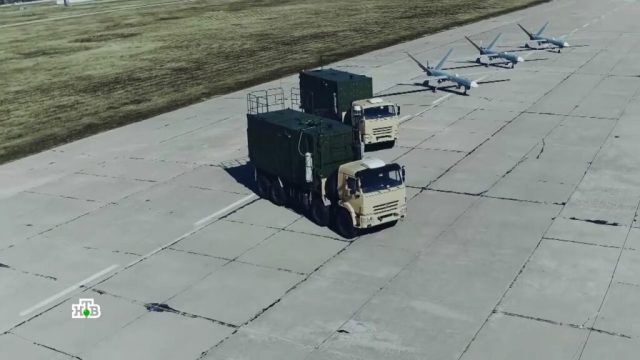
The first complex "Orion", handed over to the army
Image source: bmpd
Until now, in Russia, you can hear the thesis that the strike UAV is an "anti-partisan" weapon (sometimes more humiliating terms are used), but recent events in Nagorno-Karabakh have clearly shown that this is not the case. According to military experts, it was the use of attack UAVs by the Azerbaijani side, such as the Bayraktar TB2, that was the main key to the success of President Ilham Aliyev.
Why did this happen? A modern attack UAV, having a small size, being quite quiet and carrying deadly weapons, can seriously affect the course of the war. Even in a major conflict, this is a more dangerous weapon than, say, the Soviet su-25 attack aircraft. The latter can not use advanced aviation weapons and in the event of entering the zone of enemy air defense (which is extremely likely if we are talking about the use of unguided ammunition or old air – to-surface missiles of the X-25ML type), it will almost certainly be shot down by the enemy.
Russia went to the "Orion" not one year, not two or even five. Back in 2010, made the first flight of its conditional counterpart-reconnaissance and strike UAV " Dozor-600 "from the company"Transas". It is similar to the MQ-1 Predator: a normal aerodynamic scheme with a single-girder fuselage was chosen for the vehicles. Both UAVs have engines of approximately 100 horsepower. At the same time, if different versions of the "Predator" produced more than 350 units, the "Watch-600", as far as can be judged from open sources, exists in a single copy.
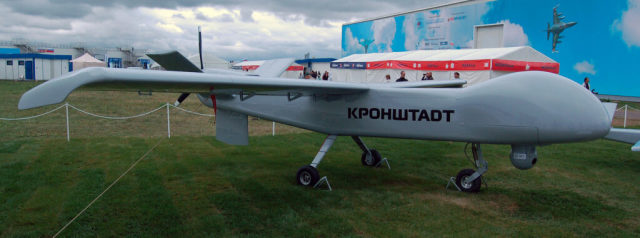
"Dozor-600»
Image source: Transas
As for the Orion ,two control vehicles and three UAVs were handed over to the military as part of the first delivery. It is also worth Recalling that even earlier, in April 2020, the Russian Ministry of defense was delivered the first serial sample of this unmanned aircraft complex for trial operation. The first contract for serial deliveries was signed last August.
The UAV has a maximum take-off weight of 1000 kilograms and a payload mass of up to 200 kilograms. The Orion is eight meters long and has a wingspan of 16 meters. The flight duration is 24 hours, the ceiling is 7.5 kilometers, and the speed can reach 200 kilometers per hour. Earlier it became known that the prototypes received a Rotax 914 engine with a capacity of 115 horsepower. Serial devices must be supplied with Russian APD-110/120.
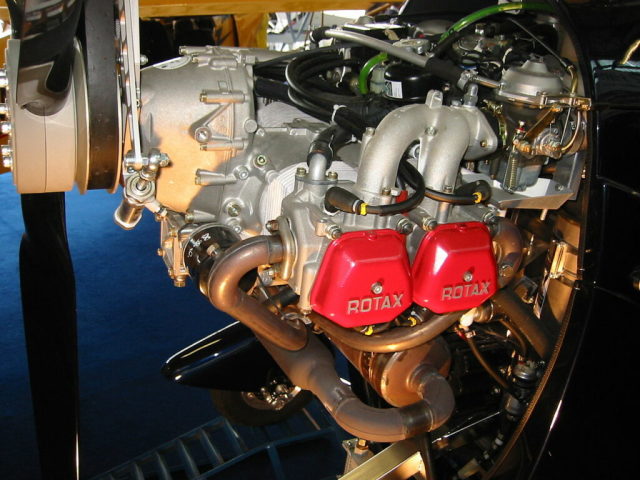
Rotax 914
Image source: wikipedia
The control center includes the commander's, drone control operators', and target load control operators ' workstations. The UAV takes off and lands automatically. In peacetime, satellite navigation is used for landing. If communication with the satellite is muted, the device can operate using a dual-band locator. Finally, if none of the above options work, special lasers are used for landing.
The most interesting thing concerns weapons: it makes the Orion UAV unique (of course, by Russian standards). As the official press organ of the government of the Russian Federation wrote earlier this year, the device has three suspension points: two under the wing consoles and one under the fuselage. According to the data presented, the device can already use cheap small-sized weapons.
As part of the Army-2020 forum, Kronshtadt showed the layout of the following aircraft weapons for Orion.
- Aviation small-sized guided missile X-50;
– Corrected small-size aerial bomb the KAB-20;
- Adjustable SMALL-sized KAB-50 aircraft bomb with a Grad MLRS warhead (three versions with different guidance systems were demonstrated: laser, tele-and thermal imaging);
- Controlled planning aircraft bomb UPAB-50 with a warhead of the MLRS " Grad»;
-An unguided FAB-50 aerial bomb with a Grad MLRS warhead.
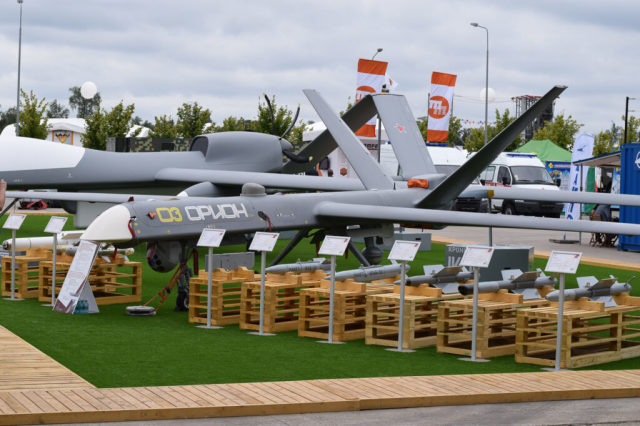
Orion and its armament
Image source: bmpd
We will not consider all of them now, but we can analyze the capabilities of the KAB-20S. The ammunition has a diameter of 130 mm, a span of 350 mm and a length of 900 mm. The weight of the product is 21 kilograms, and the warhead weighs seven kilograms. This is enough to guarantee the destruction of lightly armored vehicles. The satellite guidance system makes the munition as independent as possible from external influences (which, for example, would not be possible to implement using a laser guidance system). In total, the Orion UAV can carry from three to six adjustable bombs on external holders, depending on their caliber. Or up to four guided missiles.
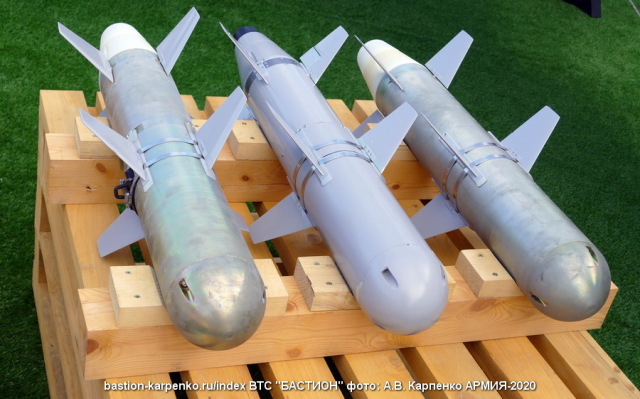
KAB-20S
Image source: bastion-karpenko
Is it too much or too little? Depends on what you compare it to. Even if these munitions have been brought to a state of readiness, the most powerful foreign UAVs carry a more serious load. The US recently tested an MQ-9A Reaper unmanned aerial vehicle armed with eight AGM-114 Hellfire air-to-surface missiles. A regular Reaper, we recall, carries no more than four such missiles, which is also quite a lot.
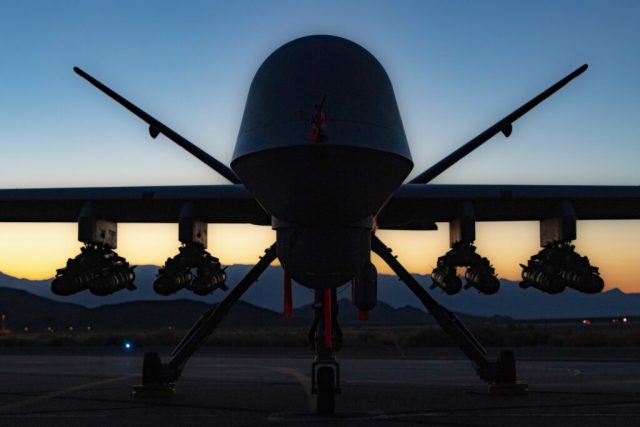
The United States successfully tested the MQ-9A Reaper unmanned aerial vehicle armed with eight AGM-114 Hellfire air-to-surface missiles
Image source: af.mil
The most deadly UAV of our time is called the Chinese CH-5 ("Caihong-5"). The maximum take-off weight of the drone is estimated at 3.3 tons, of which one ton is in service. The total number of air – to-ground missiles can be 16. As the designers noted, "the UAV made of composite materials can continuously stay in the air for up to 60 hours-three times longer than its predecessors", its flight range is 10 thousand kilometers.
Nominally, the CH-5 is completely superior to the conventional Russian counterpart-both in terms of combat load and time spent in the air. However, do not forget that formally they are in different weight categories. The Chinese device is potentially more expensive and more complex. His loss will be more tangible in every sense.
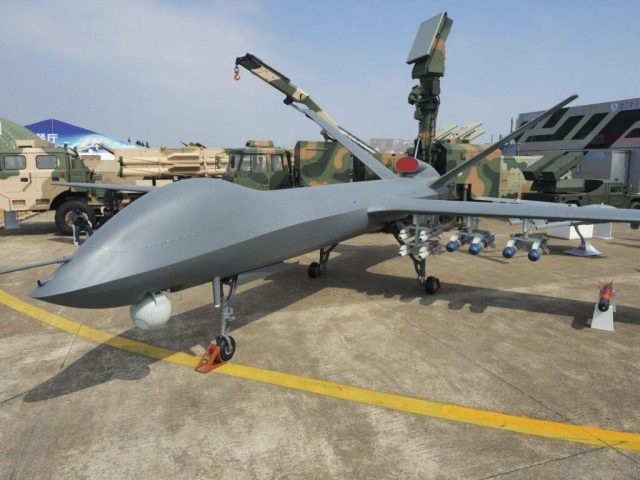
CH-5
Image source: bmpd
As for the "Bayraktar" TB2, the Russian development looks decent against its background. The Turkish UAV can carry four guided anti-tank missiles UMTAS with laser guidance or corrected planning high-precision aerial bombs Roketsan MAM-C, MAM-L, which can hit targets at a range of up to eight kilometers. So the devices are similar in armament.
TB2 testing / ©Baykar Technologies
On the other hand, you need to understand that the Turks will not be limited to the current version of "Bayraktar". The device is already being actively upgraded: recently, for example, a variant of TV2S with a satellite control system was introduced, which makes its range "unlimited". The UAV's autonomy is 24 hours, but previously the control radius from the ground station was only 150 kilometers due to the radio horizon.
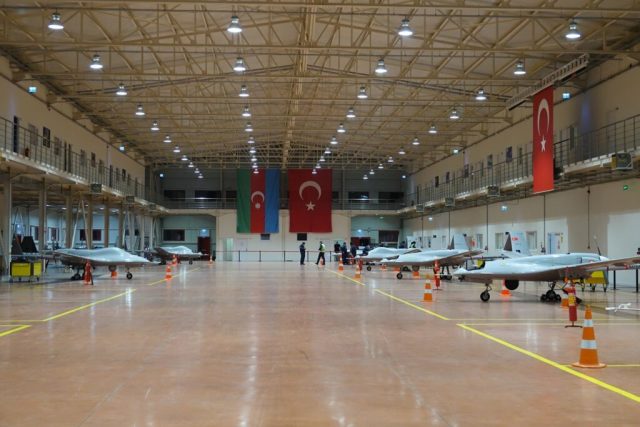
TB2 and TB2S UAVs
Image source: Baykar
More importantly, more than 30 TB2 complexes were delivered to the Turkish Ground forces alone. But they were also received by other branches of the armed forces, as well as foreign customers. Ukraine, for example, has six such UAVs, and may soon be followed by a contract for another 50 such devices. In short, "Orion" has something to strive for and where to grow.
The device generally follows global trends: this applies to both design and control methods. From the point of view of the concept, there are no shortcomings in the Russian UAV (or we do not see them at the current stage).
Race with America and sound
Orion, being a landmark development for Russia, does not pretend to any revolution on a global scale. In our time, they are actively creating high-speed jet UAVs, which will also have signs of low visibility. A kind of revolution could be the American Northrop Grumman X-47B, but it remained only a bold experiment: the program is closed for today.
Russia decided to keep up with America: back in 2007, MiG built a full-size mock-up of the SKAT UAV, which was supposed to be a large turbojet attack drone capable of developing approximately 850 kilometers per hour.
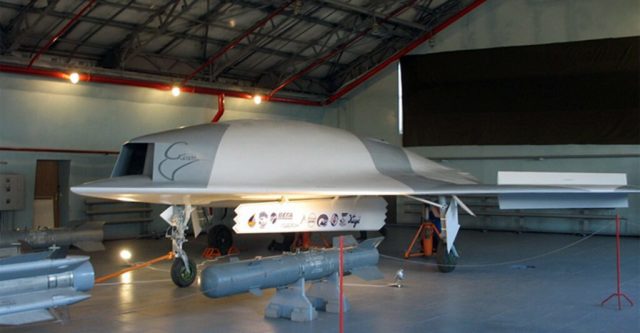
UAV " Stingray»
Image source: bespilotnik24
Now we can almost certainly say that the project ended in nothing. In 2019, the General Director of MiG, Ilya Tarasenko, made a somewhat lengthy statement on this issue. "We see a market for this drone ("Stingray". - Ed.). the Niche in which it will be located is not currently closed in Russia. We hope this year to complete the approval of the TTZ for it with our customer. After that, we will move on to development work, " he said. However, the lack of any specific information is clearly not in favor of the program.
The S-70 Hunter UAV developed by Sukhoi and made its first flight on August 3, 2019 has more definite prospects » . It is seen as a strike UAV, and an unmanned wingman for a fifth-generation fighter, and even a "prototype of a sixth-generation fighter" (which, of course, is an exaggeration).
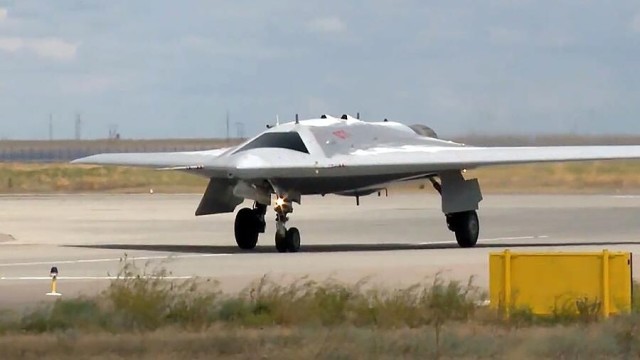
S-70 " Hunter»
Image source: Dry
There are also frankly exotic versions of the device. "According to the concept of application proposed by the Agency, the Hunter with long-range weapons will be brought to the borders of several thousand kilometers to intercept enemy aircraft, that is, it will attack air targets even before they approach the air defense zone, "one of the sources at the Army-2020 exhibition told TASS.
The lack of confirmed characteristics adds to the confusion. We can only say with confidence that this is a large vehicle, whose take-off weight is probably in the range of 25 tons. Sometimes the UAV is called "supersonic", but the choice of subsonic aerodynamic layout such as "flying wing" does not speak in favor of this.
The closest analog of the device-the American Northrop Grumman X-47B-had a maximum speed of "high subsonic" at a cruising speed of M=0.45 (Mach number). Most likely, the Russian UAV has similar characteristics.
X-47B tests / ©Northrop Grumman
According to previously presented data, the composition of the avionics unit includes an information management system, automatic control system, equipment interface with obseryations equipment, control system and diagnostics of airborne equipment inertial-satellite navigation system.
It is difficult to judge the weapons of the "Hunter". Apparently, the UAV created on its basis will be able to carry fairly large guided missiles and bombs on external and internal suspensions. The s-70 Arsenal may include KAB-250 corrected aerial bombs or X-38 missiles. But this is just speculation.
Recent information can shed light on the situation around the UAV. According to the state Procurement website, more than four billion rubles will be spent on continuing work on the creation of the first Russian heavy attack UAV "Hunter". In particular, the portal posted information about the tender for the development of a ground control point to ensure the development of an attack drone. Prototypes will be delivered to the customer in 2021.
The first flight of the newest unmanned aerial vehicle "Hunter" / ©Russian defense Ministry
In August 2020, the head of the United aircraft Corporation, Yuri Slyusar, said that they want to speed up the development of the Hunter, so they can deliver the first devices to the troops in 2024.
What does this statement mean? First, that the " Hunter "is most likely not in danger of the fate of the"Stingray". It may well be reborn into something serious. Secondly, that we are talking about a multi-purpose unmanned vehicle in the usual sense of the word. Obviously, the development of an unmanned wingman for fighters would require more time to test and fine-tune serial copies. As well as an unmanned long-range interceptor.
But even if we accept the version about the UAV strike, the timing looks too optimistic. Suffice it to say that only one prototype has been built to date – and it is, as far as can be judged, very far from the production version. This is supported by the UAV layout presented at the International aviation and space salon-2019. Unlike the current model, the device has a flat nozzle that reduces visibility in the infrared range. Experts also focused on the wingtips, which have become different. In General, the fuselage has acquired more pronounced features of "stealth", which is natural given modern requirements.
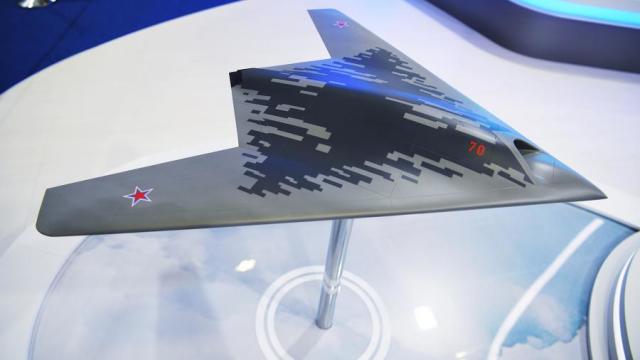
Model S-70 " Hunter»
Image source: Dry
In General, there are four potentially significant Russian developments in the field of shock UAVs: "Dozor-600"," Orion", SKAT"and " Hunter". Of these, only the fourth and second are likely to have any prospects. In both cases, the developers decided not to push their luck and go the road tested by Western experts. I must say, under the circumstances, this is the most reasonable thing to do.
In the Network, the thesis about the need to develop something "fundamentally new"is often heard. However, you need to understand that Russia, due to financial, technological and even purely political (cooperation with the West in the defense sphere is almost impossible now) difficulties, it will be extremely difficult to do this.
You can't predict anything either. Much will depend on how the United States and a number of other countries implement the concept of an unmanned wingman for fighter jets. The latter can both change the world of combat aviation forever, and become another high-profile failure that will cost taxpayers billions of dollars. In the first case, Russian developers will have to develop a new direction for them. However, such difficulties in the development of unmanned aerial vehicles have long been commonplace and few people are afraid.
